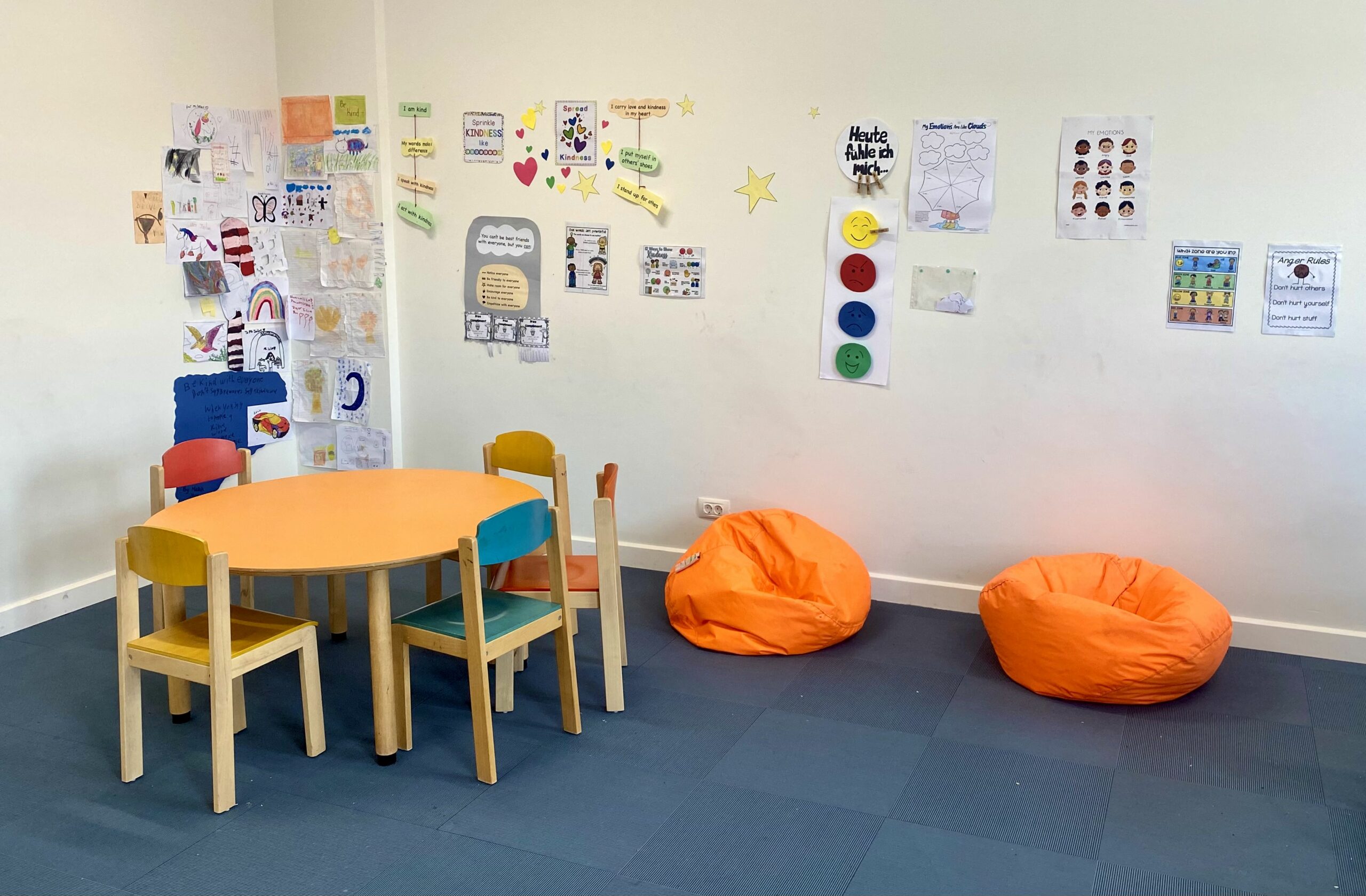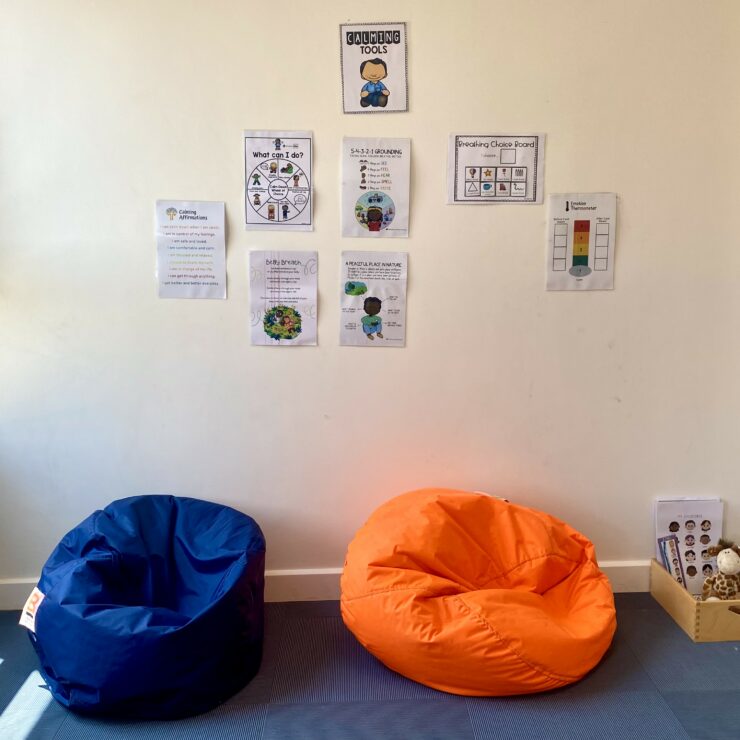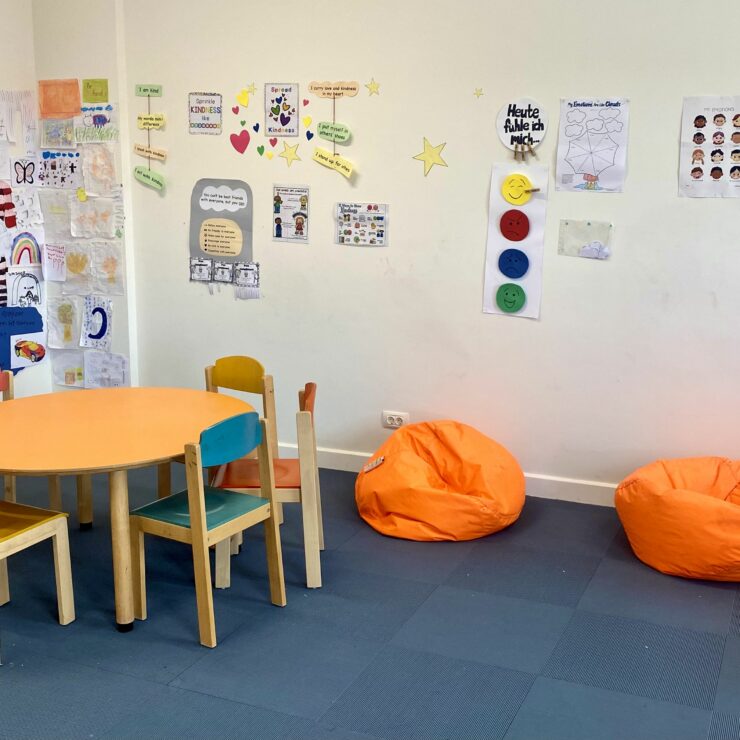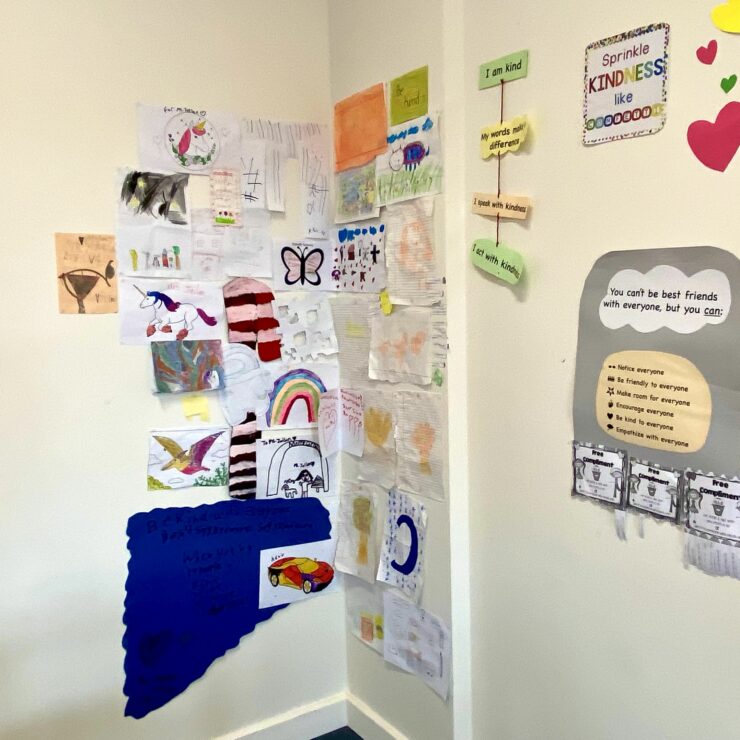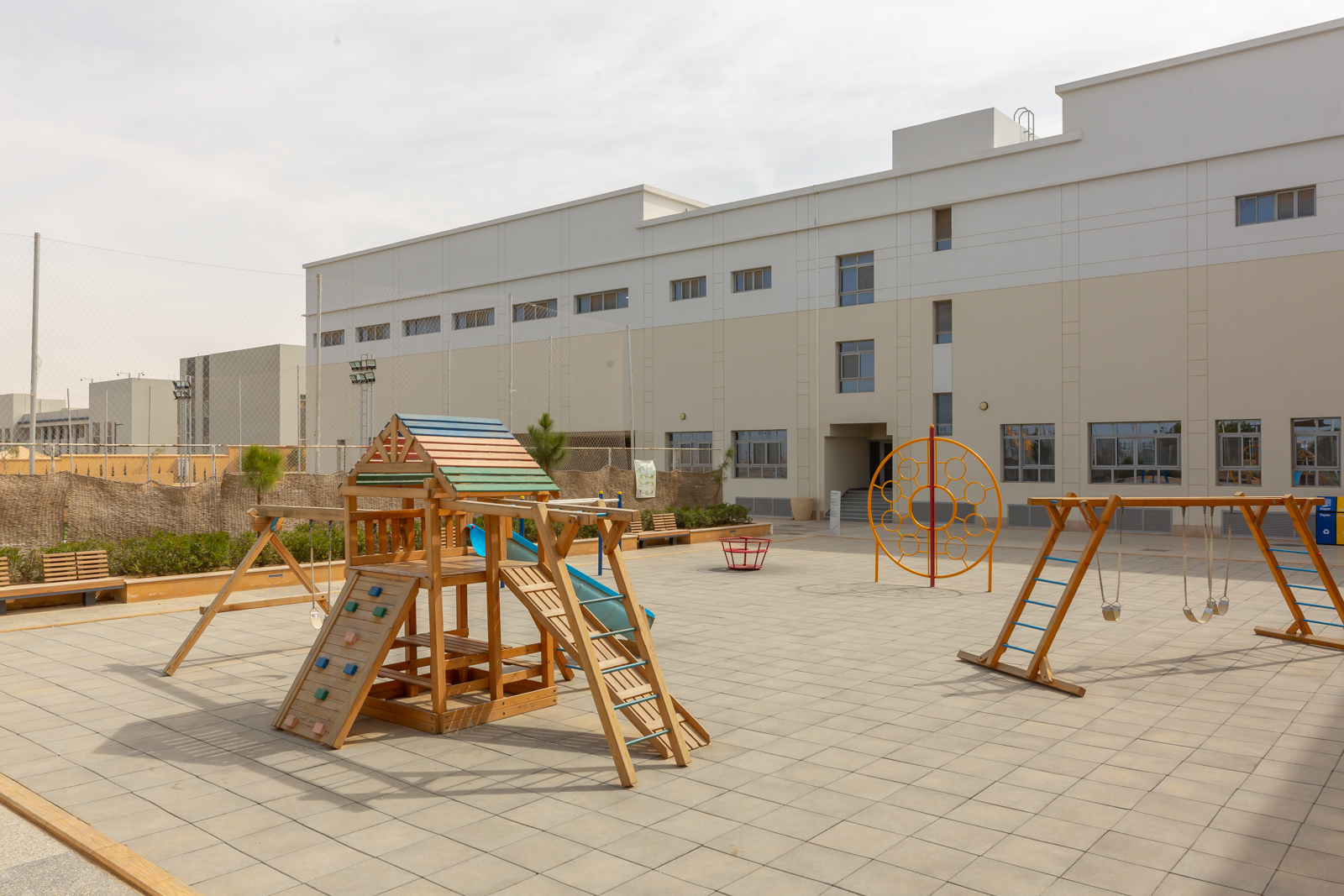
Quiet Room
The Quiet Room is a special room where our students can meet our Social Worker in one-on-one counseling sessions or small groups sessions in which Social and Emotional Learning activities are conducted. This room has different corners such as the “Calm Corner” where students have different tools and strategies they can use to calm down and self-regulate. While the “Conflict Resolution Corner” is a corner dedicated to students who need to resolve a conflict together with the guidance of the Social Worker. We also use our Quiet Room for reflection sessions, in which students have a safe and positive environment to reflect on their choices and behaviors. All students are welcome to visit the Quiet Room during breaks and/or whenever they need the Social Worker’s support!
Importance of Our Social Worker
The Social Worker strives to maximize student success, promoting access and equity for all students. She is responsible for supporting students and advocating for their emotional, mental and physical wellbeing. This is fostered through intervention strategies for a range of issues that school-aged children face such as bullying, learning difficulties, etc. The Social Worker collaborates with parents, teachers, and school administrators to ensure that our school is a safe and positive environment for all students. The Social Worker also has the role of counseling students, developing and providing crisis intervention strategies to improve student success. In addition, the Social Worker collaborates and works closely with teachers to identify students that are struggling emotionally, socially or academically and identifies the root cause of their issues. The Social Worker also directs students and their families to mental health services if needed.
Methodologies used as a social worker:
The role of a social worker is diverse and divided homogeneously. As a social worker, we use various techniques to support students in the academic setting and in their daily lives. There are various techniques used in order to deliver the best psychosocial service for the student.
- The first technique used is individual counseling, it’s mainly administered to students in a private one-to-one session in a calm, secure environment to listen to their problems and manage finding solutions for them. The main goal of the session is to detect whether the problem stems from an academic manner or any other personal issue that might affect the student in their overall academic/social performance. Techniques are used differently according to the child’s age and mental capacity. Some of the methods used are play therapy, roleplay, solution focused therapy and cognitive behavior therapy. Secondly, small-group counseling is one of the techniques that shows immense effectiveness. It’s mainly focused on a specific group of students based on their needs. For instance, those small groups are usually conducted in a manner that ensures that the needs of each child of that group are met and a conclusive solution is found.
- Additionally, as a social worker it’s very important to include the child’s teachers and parents/guardians in guidance sessions. Those sessions are offered in school and conducted at levels. The main goal of providing those sessions is to bring social awareness and to help the students acquire effective relationships skills. All that is included in panel talks depends on the specific topic based on the needs of the students. The topics could range from getting to know the school rules to more intense topics such as bullying, understanding emotions and controlling behavior. The main goal is to provide the parents with information that is relevant and useful based on their children’s needs and desires.
Reward and Consequence System:
- The use of logical consequences in a proper manner is considered a very effective approach to discipline children in school’s context. It’s a way in which teachers/parents use structured learning opportunities for children. The goal of logical consequences is to stop children's misbehavior and help them make more constructive choices. In the same vein, to apply consequences effectively, adults need to behave in a thoughtful and reflective manner for children to abide. The application of the logical consequence system in ESNK has shown impressive results with the children’s behavior as has been thoroughly experimented. It demonstrated that it’s not effective in eliminating/stopping the behavior but it’s also respectful of children and guided them to take full responsibility for their actions.
- Also, we believe that promoting disciplined desired behavior is mainly done through a reward system. On the other hand, eliminating undesired behavior deems a consequence system for that behavior to lessen. A reward system stimulates children to behave in a certain way or to increase their overall motivation. Rewards may include doing special roles, given certain roles, recognizing their hard work/efforts. On the other hand, including a punishment system is also useful as it gives responsibility for the child around his decisions and helps him limit the undesired behavior/choices.
